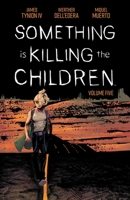Decoding the Secrets of Crete
Select Format
Select Condition 
More by Dr. Soontorn Piromsartkoon
Book Overview
WHEN I MET DR. SOONTORN on April 19, 2018 in Bangkok, Thailand, we had a lively discussion about Crete and about my novel, The Lost Disk: Historical Fiction of Suspense (Khanser, 2013). He was captivated by the story. He advised me to write a revised edition for the readers of the world to appreciate the novel better. He suggested that the book must be revised with the title of the book to Decoding the Secrets of Crete. When I was in Crete, I learned that Dr. Soontorn was also visiting Egypt, so I invited him to co-write this revised edition because I believed that his experiences could immensely enrich my work. I was glad that he accepted my invitation. Thus, we became co-authors for this book. We believed that it was the right time to decode the secrets of Crete, as well as the historical facts and events mentioned in the novel. We thus decided to include my novel in this book for our readers' enjoyment. When we embarked on writing this book, it was with the intention to provide the readers with sufficient knowledge and understanding on the historical facts and events mentioned in my novel. We wanted to provide explanations, discussions, insights, and research findings that would shed light on the idea of a lost disk, a codex, that would unlock the secrets of the world famous Phaistos Disk, an ancient treasure of Greece. We also linked the Disk to the lost tomb of Pharaoh Akhenaten that might be located in Crete. Likewise, we presented the story of Kiya, the Secondary Wife of Pharaoh Akhenaten, advancing our theory that she was responsible for the Great Escape of the pharaoh during the Aten Revolt. Kiya secretly brought him to Minoan Crete or the Keftiu Empire of which she was the Empress and where they reigned as rulers of the Keftiu civilization, as the Minoan civilization was then called. Why is there the need for a codex? For those following the developments of the attempts at the decipherment of the Phaistos Disk by scholars all over the world, it is well known that the Disk has strange hieroglyphic symbols stamped on both its sides and the message has not yet been deciphered to this day. The latest scholar to claim that he has cracked the secret of Phaistos Disk is Dr. Gareth Owens and he presented his attempt at decipherment last February 7, 2018 in Crete. We are also formally presenting our own decipherment of the Phaistos Disk in this book. We anticipate that our decipherment will cause a lively debate and that many scholars all over the world will challenge our decipherment. We shall prepare for such a global challenge. Our only proof that our decipherment is correct will be ascertained when we find the lost tomb of Pharaoh Akhenaten in Crete. We believe that he is now ready to be found. We surmise that his burial chamber is being protected by an ancient cult we refer to in the novel as the Cult of the Aten in Crete. Through the millennia, the cult has designated a Guardian as the leader who will ensure that the mummy of the Pharaoh will be kept secret forever. This is because the ancients worshipped the Pharaoh as the representative of the sun god, the Aten, and vowed to protect their god-Pharaoh's mummy from desecration and from tomb raiders. Of course, it is expected that the tomb, once found, will have unimaginable treasures. From our twelve long years of research, we have finally come to an understanding on how to decode the secrets of Crete. Our book will bring our readers to the ancient land of the Keftians (i.e. Minoans, as called by Evans), to Amarna in ancient Egypt, and finally to the Phaistos Palace ruins where the disk was found in 1908 by Dr. Luigi Pernier. A creative non-fiction with a novel inside it, Decoding the Secrets of Crete (Khanser and Piromsartkoon, 2018) is being considered as a forthcoming international film.
Format:Paperback
Language:English
ISBN:0201854910
ISBN13:9780201854916
Release Date:January 1996
Publisher:Addison-Wesley Professional
Length:352 Pages
Weight:1.19 lbs.
Dimensions:0.9" x 6.3" x 9.3"
You Might Also Enjoy
Customer Reviews
5 customer ratings | 5 reviews
There are currently no reviews. Be the first to review this work.



















![ハイキュー!! 3 [Haikyū!! 3]](https://i.thriftbooks.com/api/imagehandler/s/1A64490422A4DFC963158E6898EA642511C92FB9.jpeg)




![ブルーロック 1 [Blue Lock 1]](https://i.thriftbooks.com/api/imagehandler/s/1545C9D7869C66078873D3A7B56BD9D3487B308C.jpeg)
















